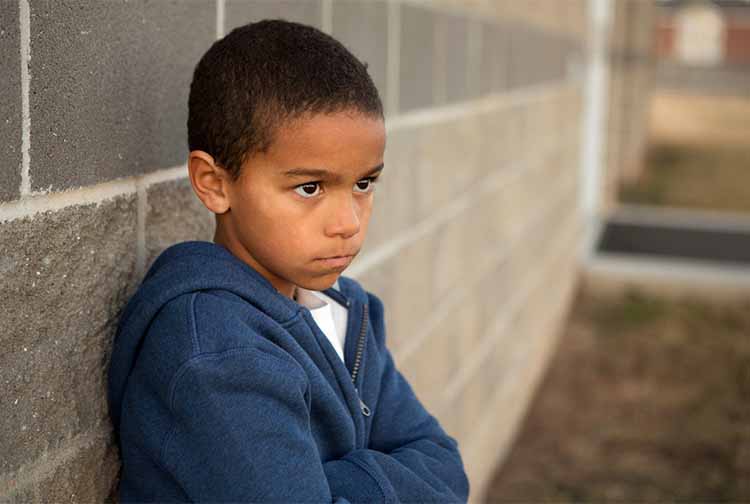
National Youth Violence Prevention Week: What’s behind the crime and how to help
April 27, 2022 Photo: Getty Images
Photo: Getty Images
Last year, Richmond had the highest number of homicides in 15 years. Violence continues to be rampant throughout the country — and youth are not immune.
Dr. Bela Sood, child and adolescent psychiatrist and senior professor for child mental health policy at our Virginia Treatment Center for Children, has supported the mental health care needs of young people ages 14-20 in the juvenile justice system for the last decade and offers some insight into what’s behind youth violence and how communities can band together to reverse the trend.
What do you want people to know about the young people you’ve met in the juvenile justice system?
Violence doesn’t happen in a vacuum. A lot of the problems, and the reasons these young people get incarcerated, stem from early childhood experiences. They’ve dealt with trauma in the form of neglect or emotional, physical and sexual abuse. Their experiences impact the way they were socialized. Many had to skip developmentally appropriate rites of passage and fend for themselves without the maturity required to do so safely, leading to risky behaviors and a life of crime.
By the time they’re incarcerated, it’s too late to rectify what has happened. However, we can learn a lot from their stories to change the way we look at early childhood and the importance of expending resources to assure normal development in children.
What’s the reason behind the violence?
A very small percentage of humans have an inherent tendency toward aggression. Another small percentage have genetic risk factors that make them more prone to violence. The rest comes about from the environmental factors explained above, which are preventable and offer hope that if communities had the will, this trajectory could be changed.
When I speak with young people about guns, I get different responses. Most commonly I hear, “I have to protect myself and my family, as where I live is dangerous.” They feel naked and insecure without their guns. Guns give them a sense of power when powerlessness is a common feeling growing up. In some cases, a gun gives them a certain stature within the community.
Guns often go hand-in-hand with the drug culture, which is a dangerous combination. The availability of drugs enhances the propensity for violence when the situation arises. Many of the crimes committed by the youth I work with are violent in nature — attempted homicide, carjacking, vandalism. This is not only scary but sad In the impact that it has on the person’s life and the mental health issues that stem from it.
When we understand what’s behind the violence, we can begin to work toward reducing those factors.
How can communities work together to reduce this violence?
About 98% of the stories I hear are replicas of each other, which says a lot, but it gives us a good understanding about the common risk factors that lead to violence. Youth violence is a societal problem. We’re not providing the right environment to support a large segment of our children, which speaks to the inequity and discrimination in how resources are allocated.
Our communities need to put an emphasis on interventions that promote healthy child development, reduce maltreatment and nurture children as they grow. There are no small or quick answers. They must be entrenched in the scaffolding of our urban and inner-city landscapes.
Are there specific things that can be done to support families and youth, and help prevent violence?
We need to focus on what will produce healthy child development and proper nourishment of the soul. This comes in the form of social supports and community engagement:
- Preschool and daycare programs can help set the foundation for nurturing by having caregivers who understand the emotional and physical needs of infants and toddlers.
- The school environment then becomes important as they grow. Teachers must have time and opportunities to be aware of the challenges their students are facing outside the classroom, and the mental health resources within the school to intervene before problems become bigger. This support will allow students to better focus on their learning — also an important part of reducing crime. Turning a blind eye to these issues because they seem unattainable is a lost opportunity. Adults must see this as an essential task of advocacy as children are not equipped to advocate for themselves yet are the future of society.
- Supporting parents’ mental health will put them in a better position to care for and nurture their children. It’s hard to ask a depressed mother to nurture her child when she is barely surviving emotionally.
- Opportunities for affordable engagement in sports, scouts, music and other extracurricular activities provide kids a sense of belonging and a healthy distraction from their challenges.
- Sometimes incarcerated youth tell me things like, “I don’t know how to survive on the outside. I continue to commit crimes so I can come back here.” Programs that encourage self-sufficiency, employment and mentoring are some of the progressive reforms in the juvenile justice system that have the promise of ending the cycle of reincarceration.
The ultimate goal? Crime will never be eradicated, but we can reduce the frequency, particularly at an early age, by paying attention to prevention of risk factors and enhancing strength-based interventions. A social environment that is supportive of healthy infant and childhood development, with emphasis on the eradication of childhood abuse, can produce very different outcomes, especially when it comes to violence.
This story was originally posted on chrichmond.org.


